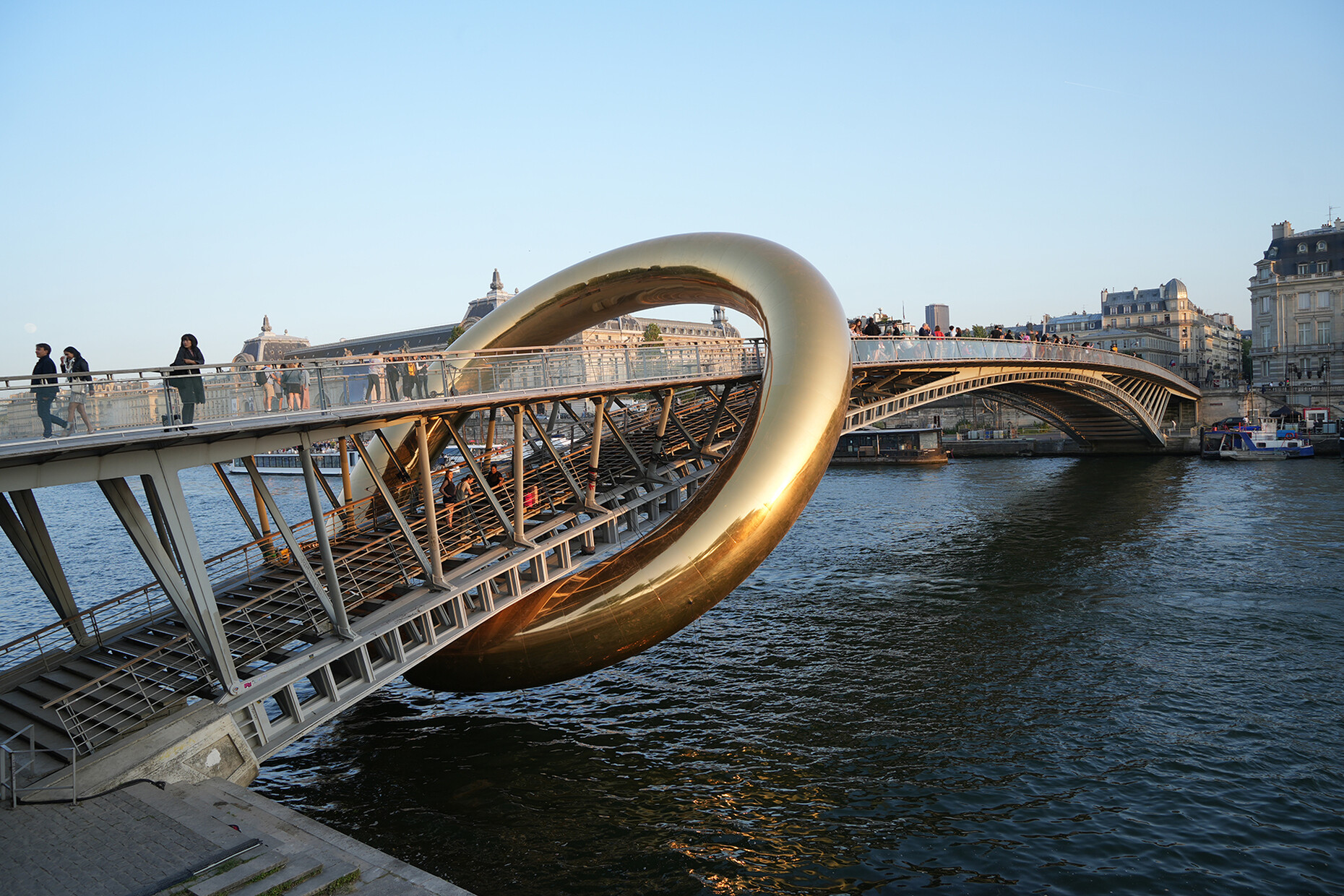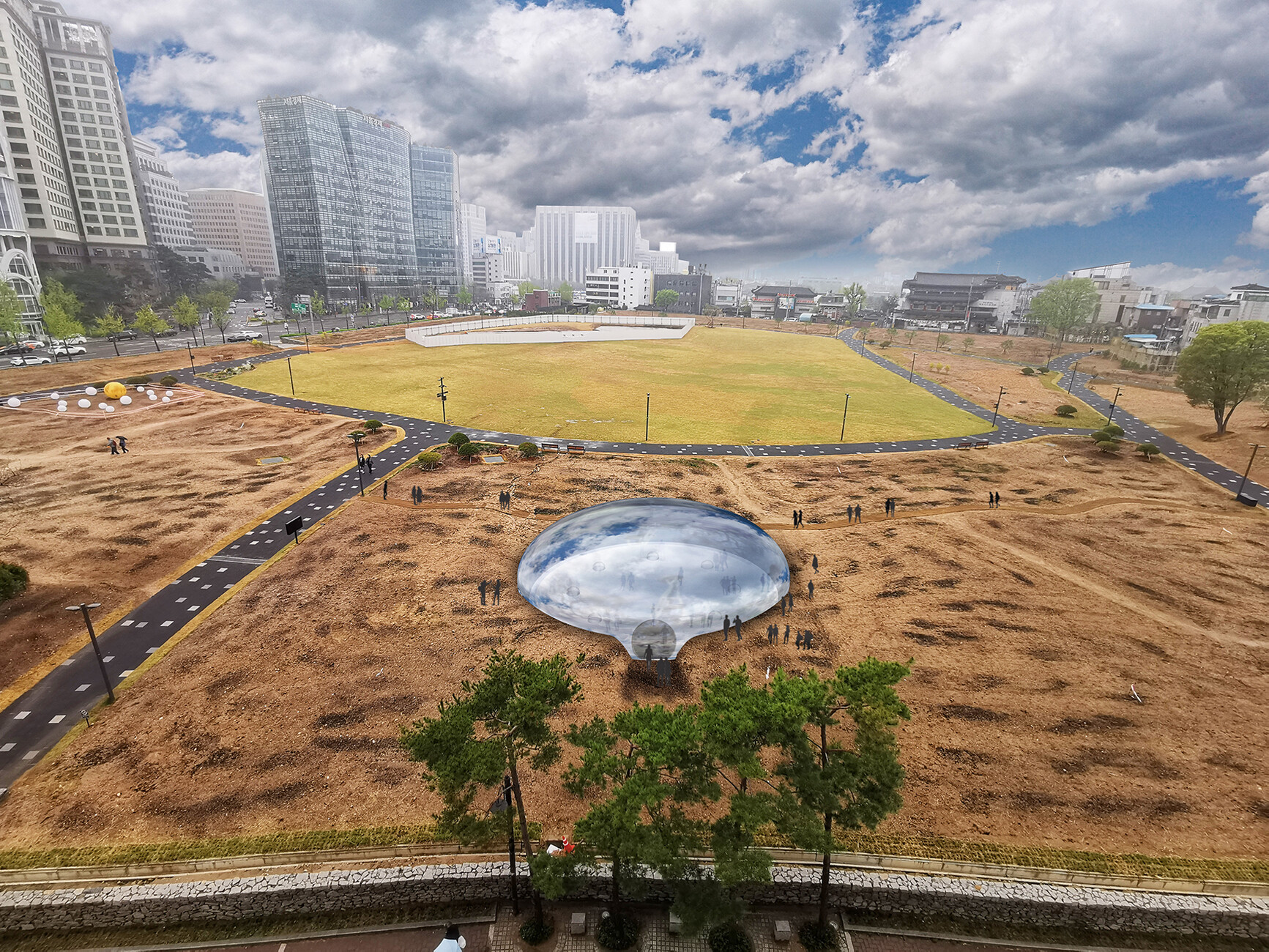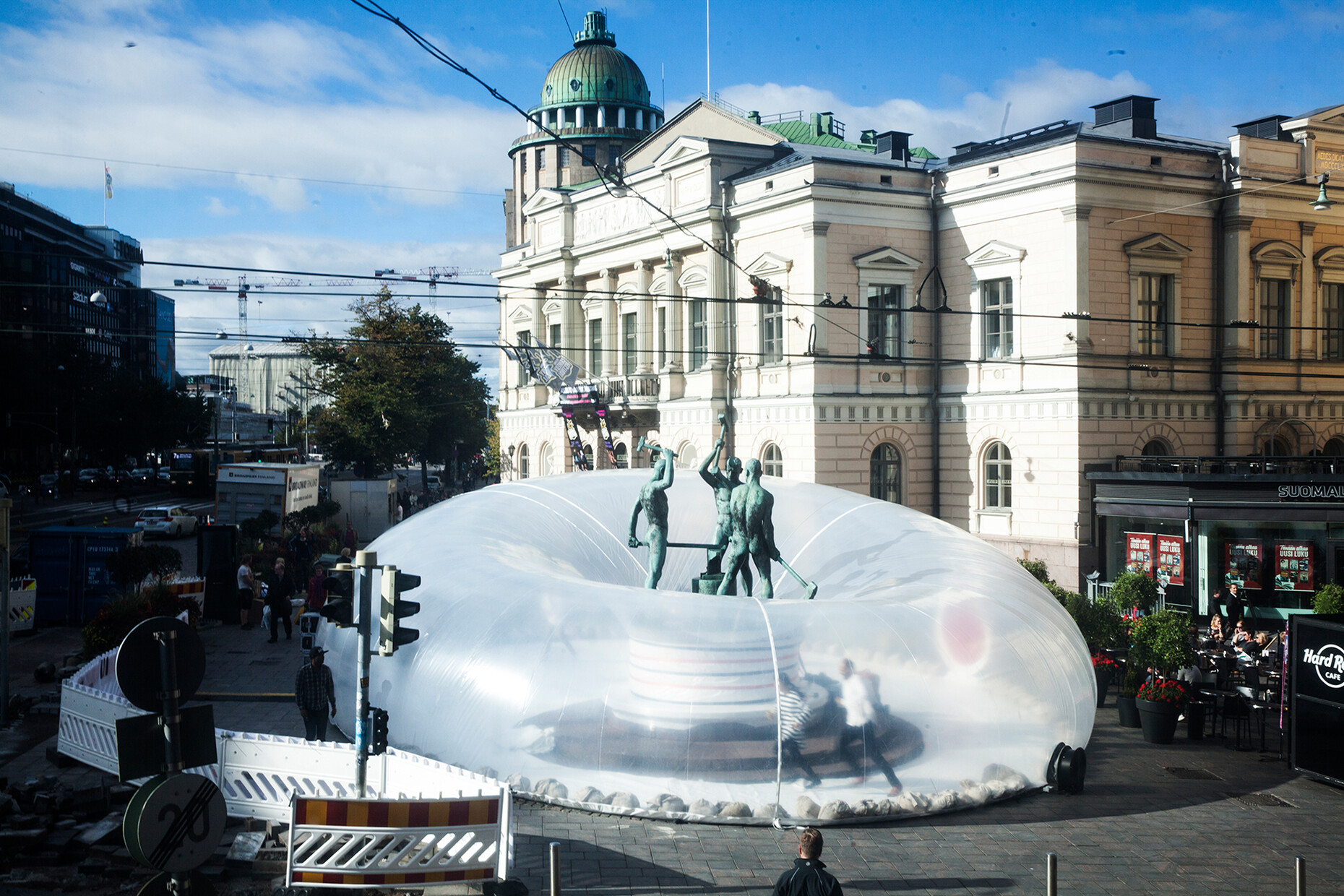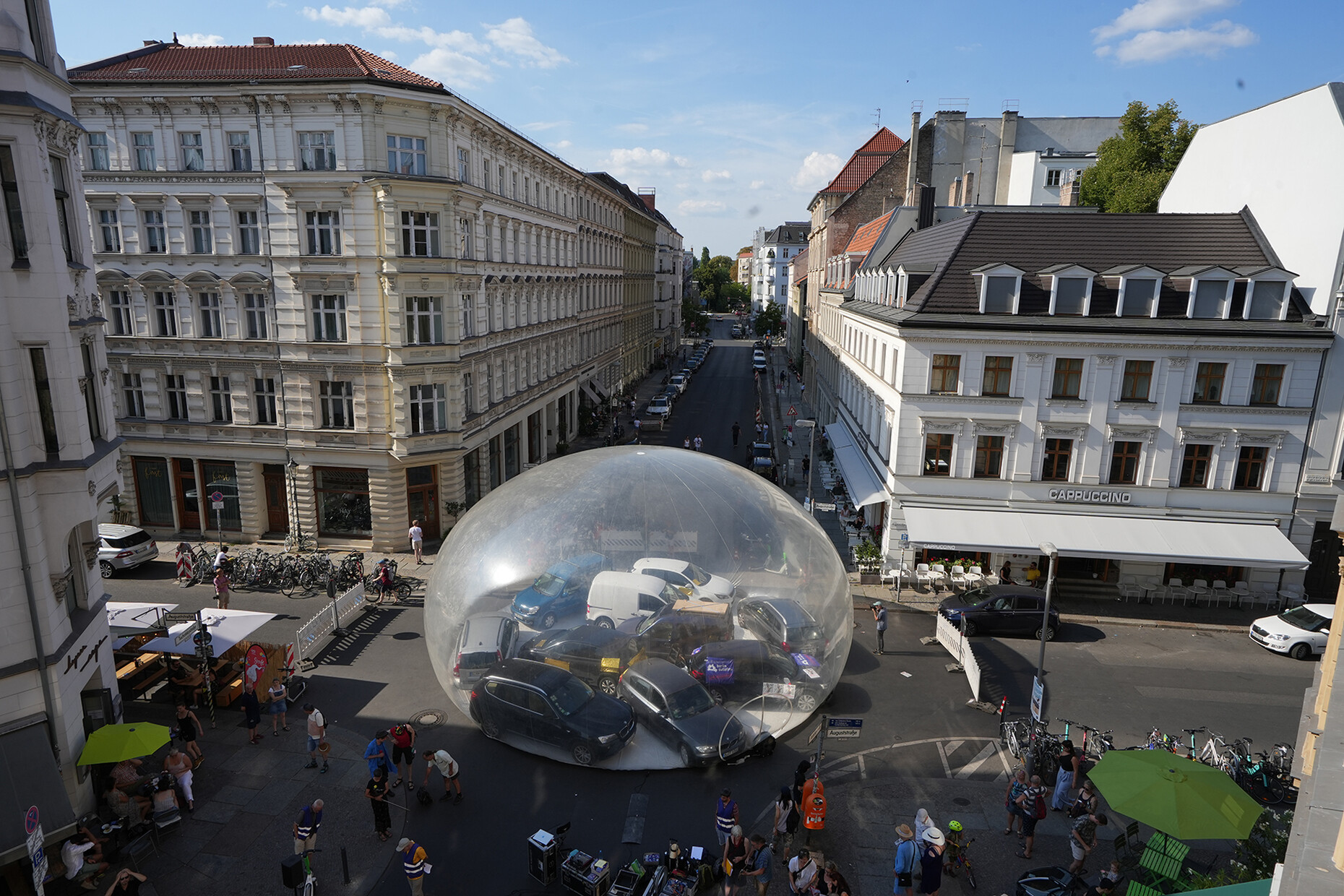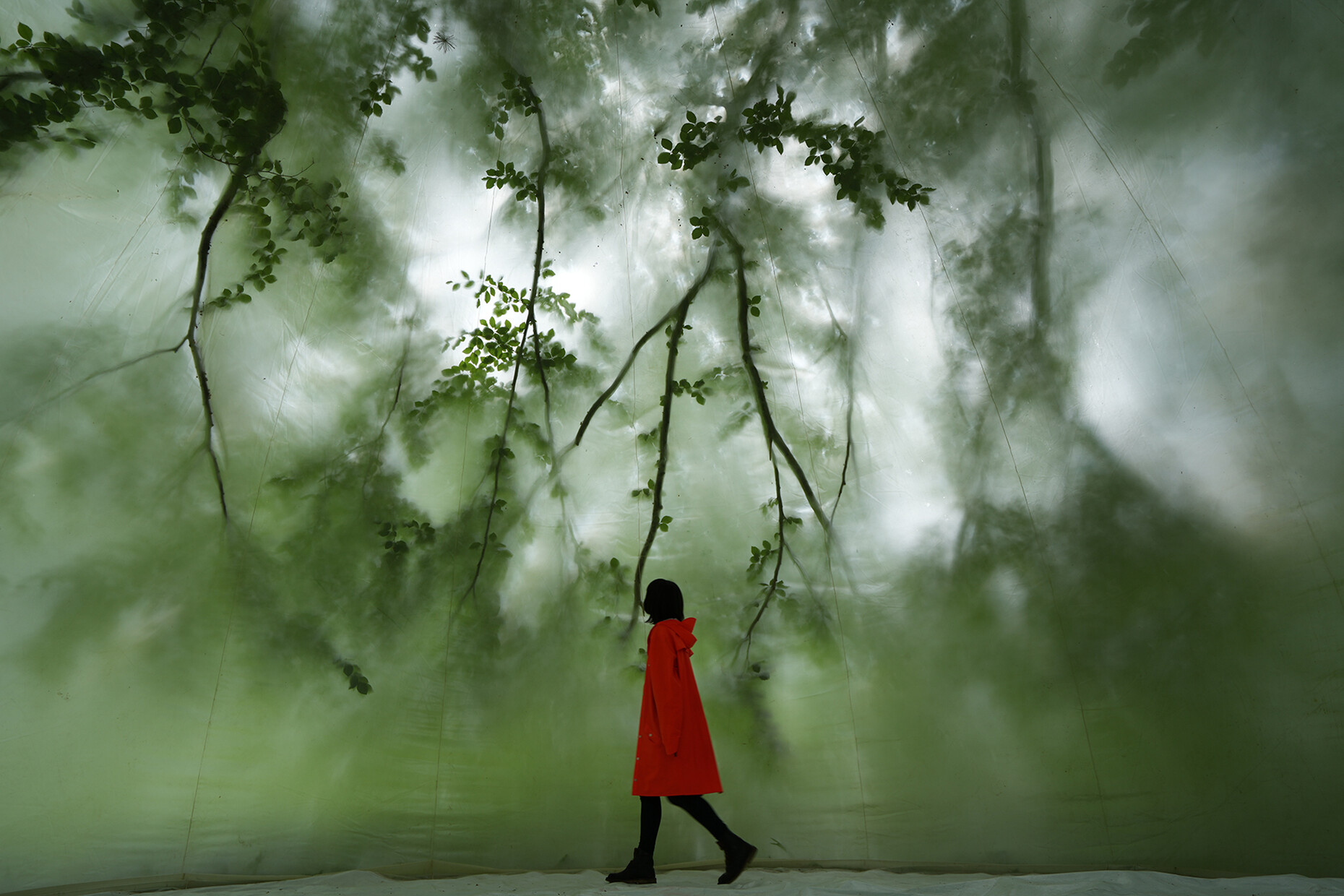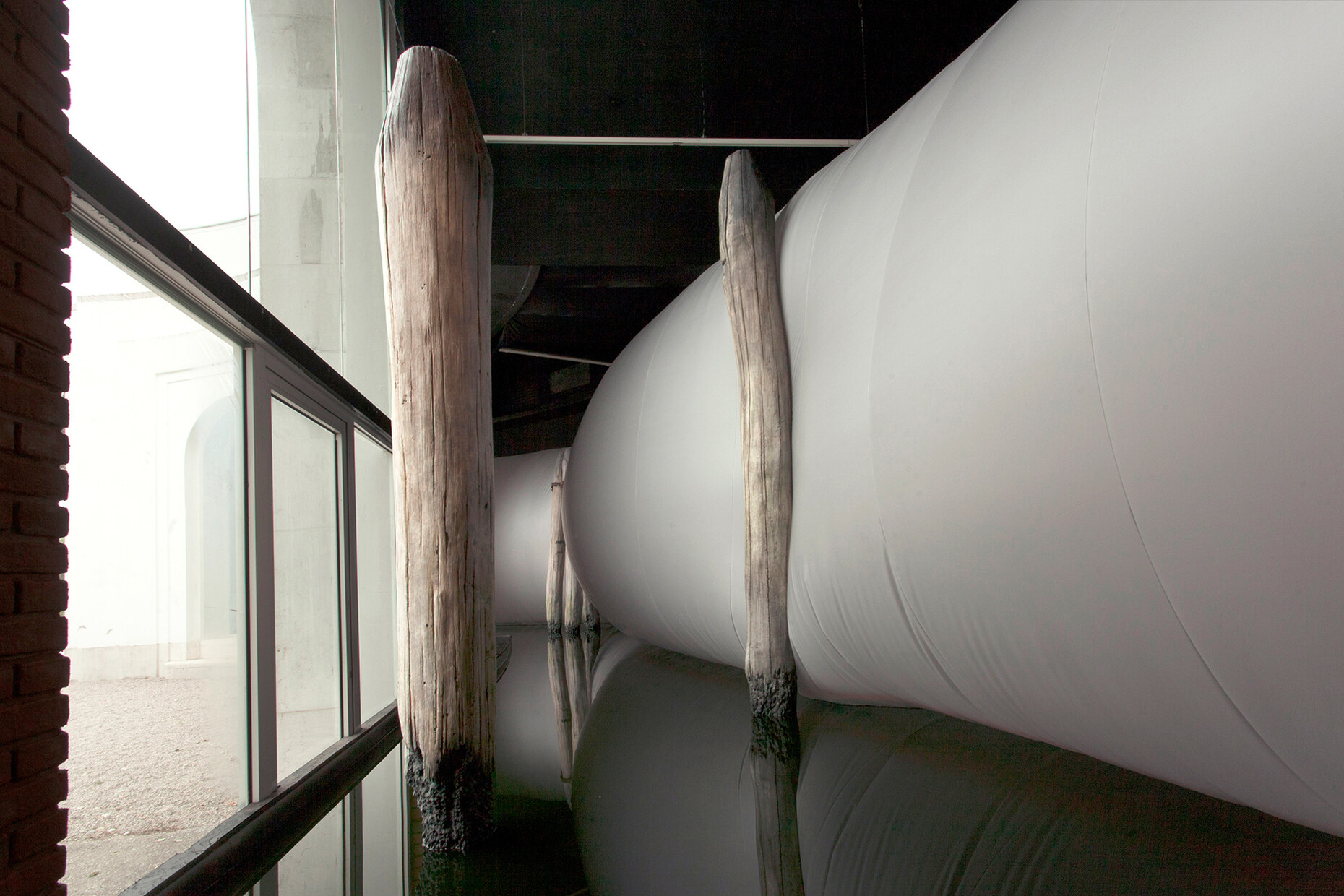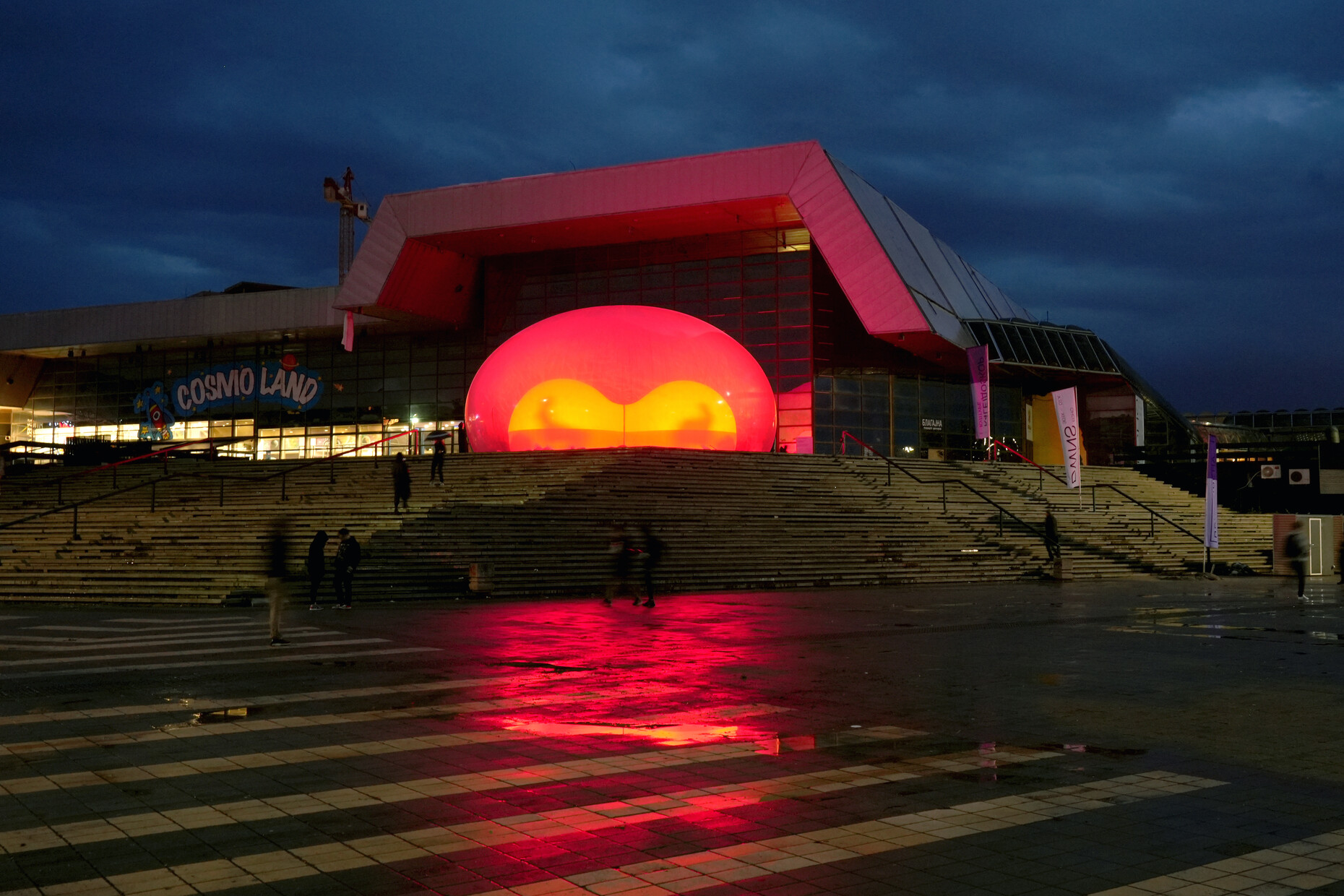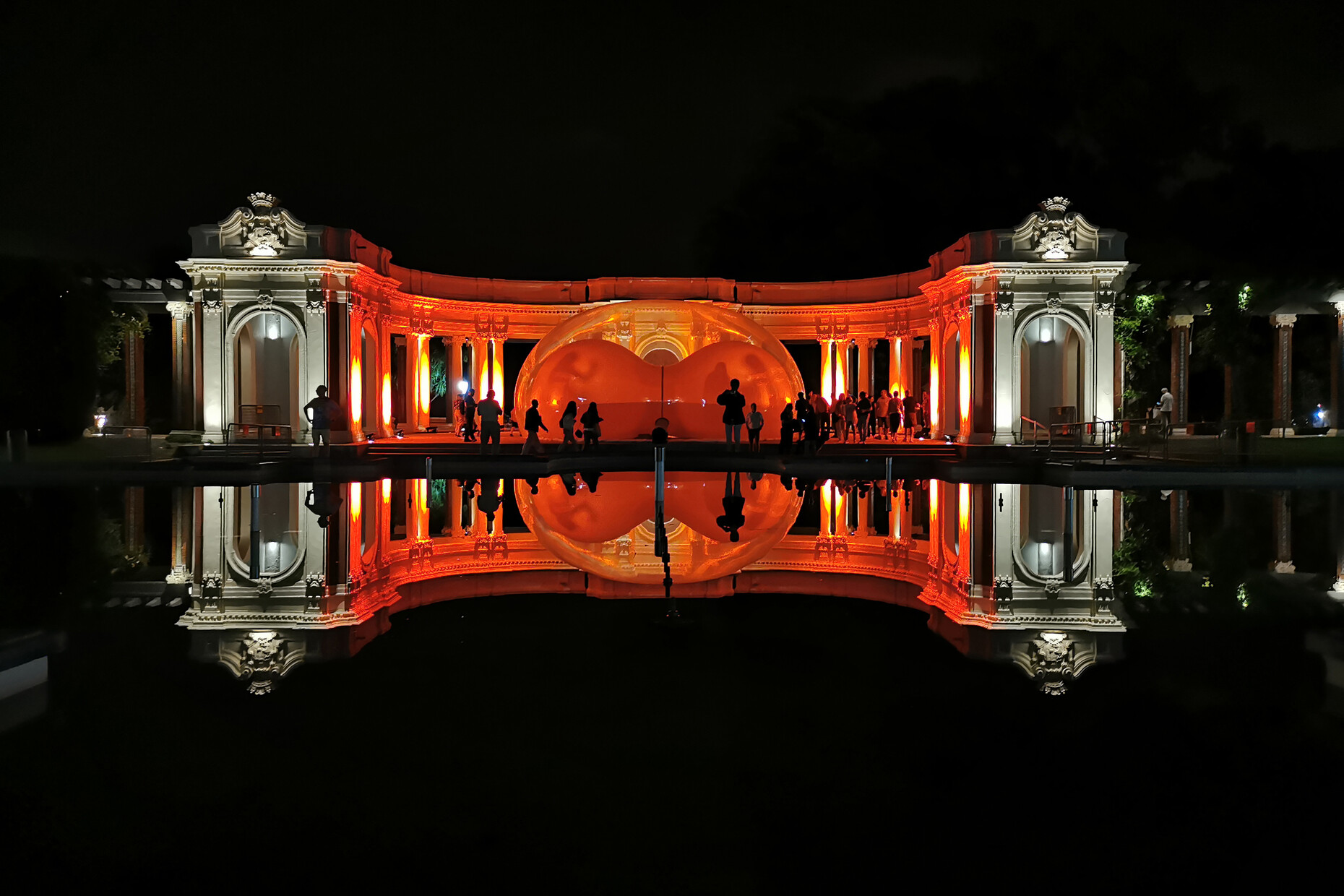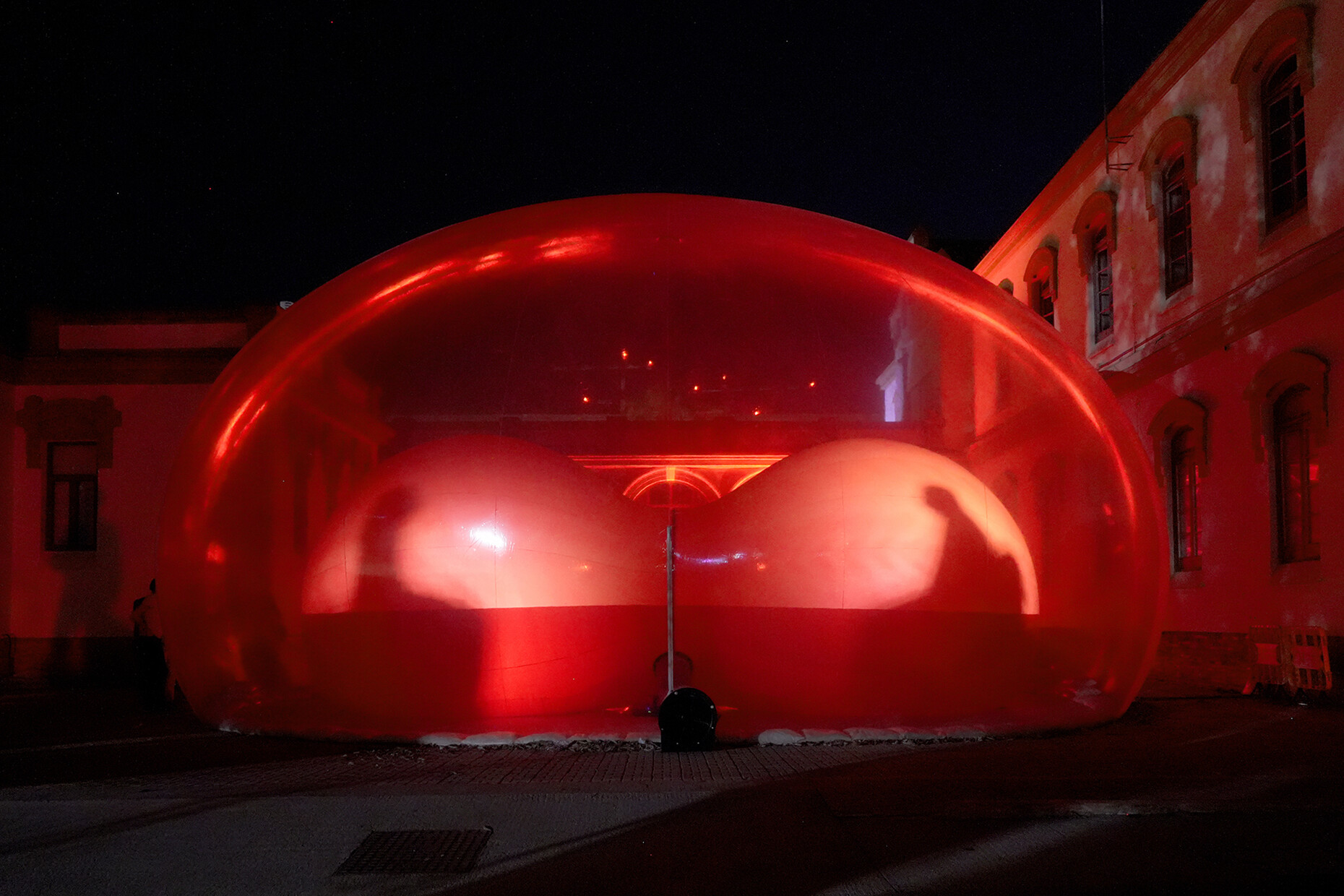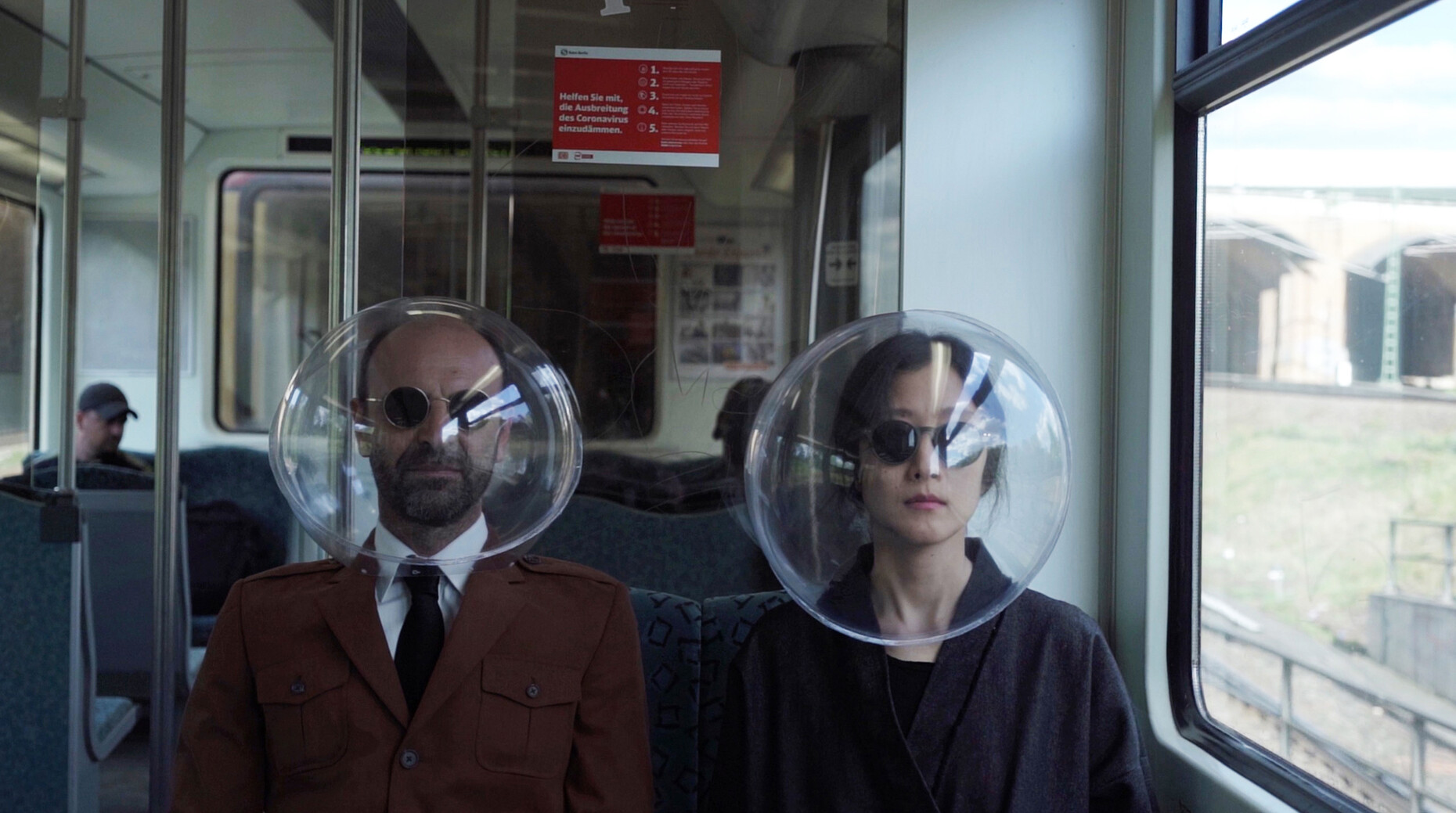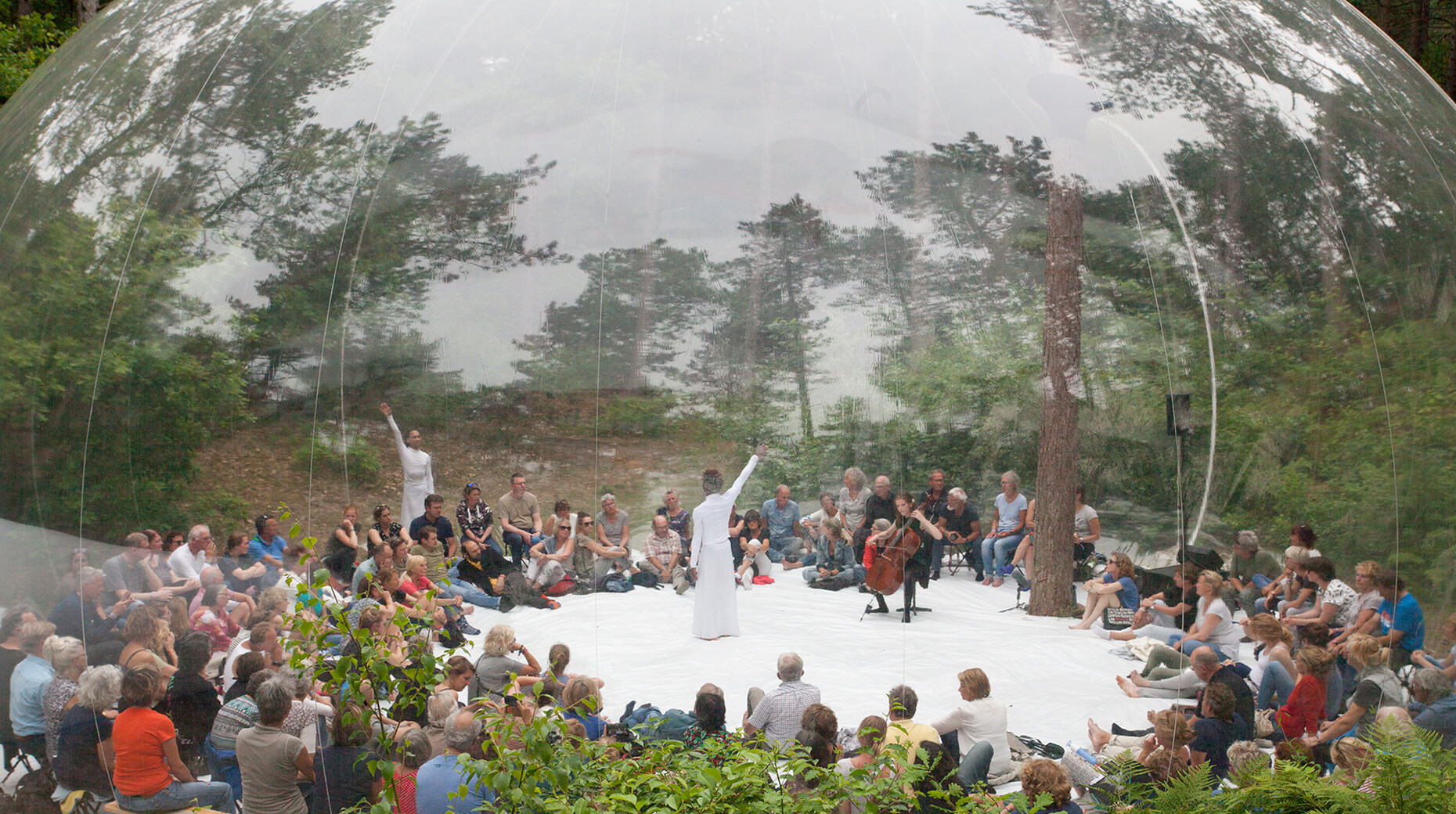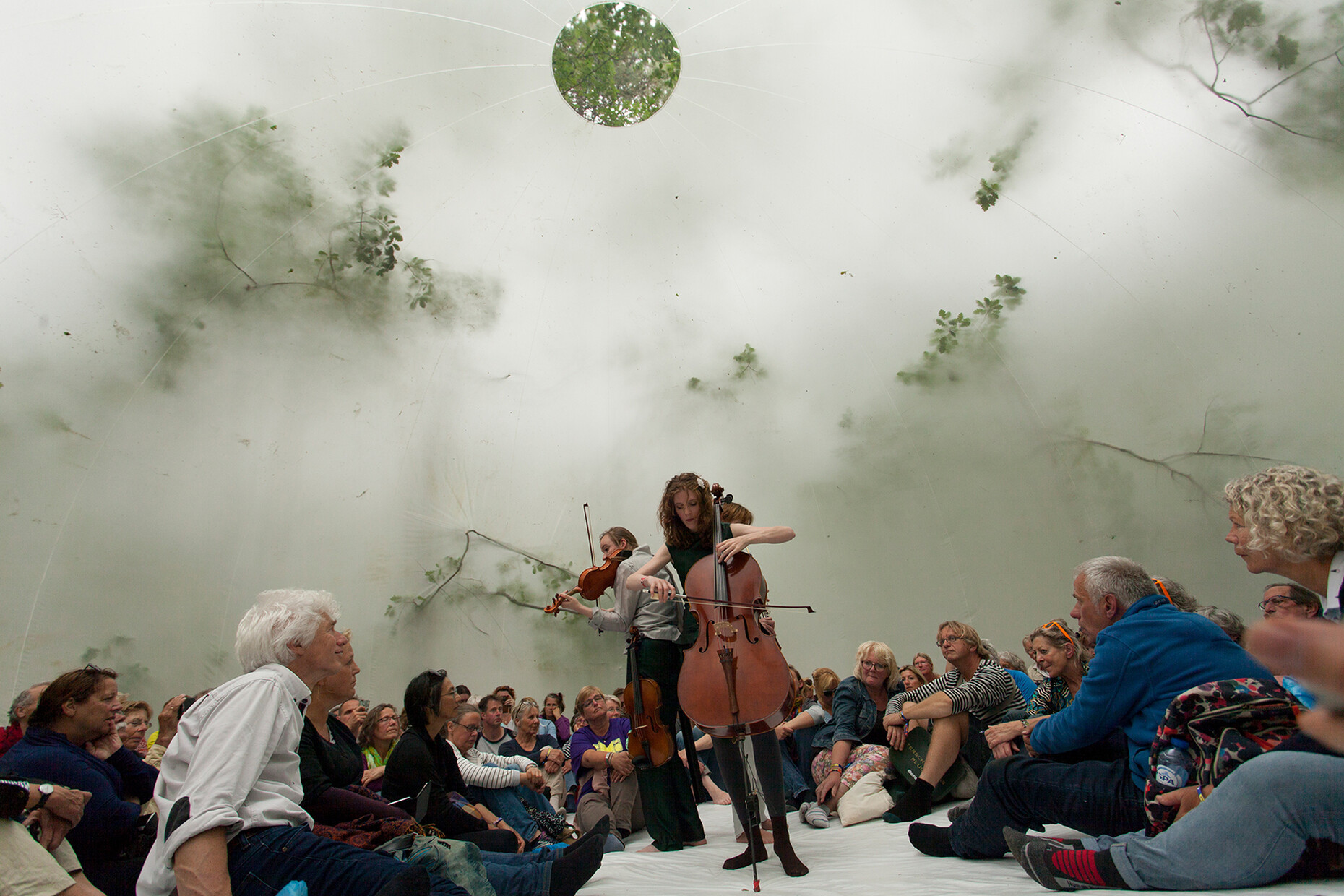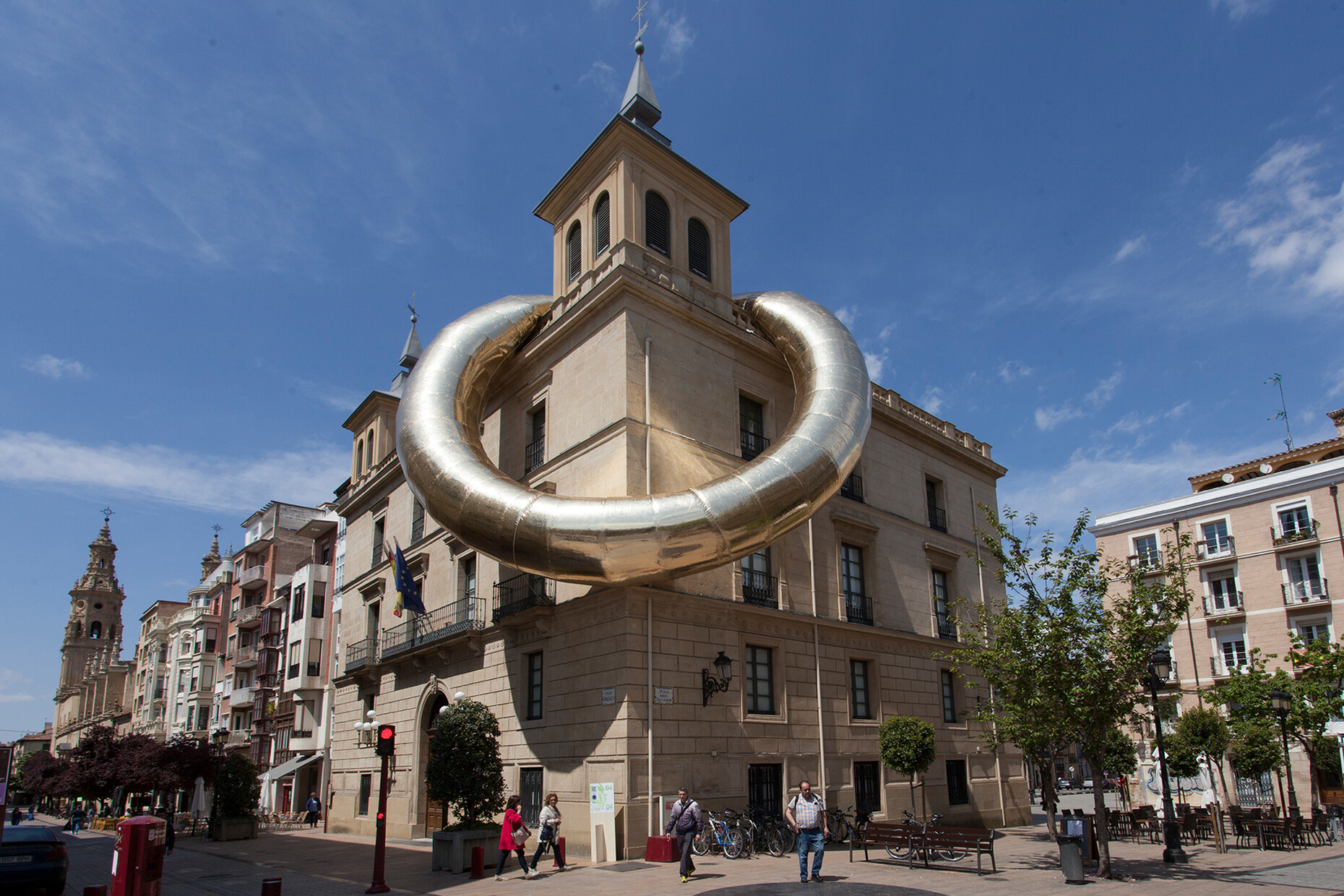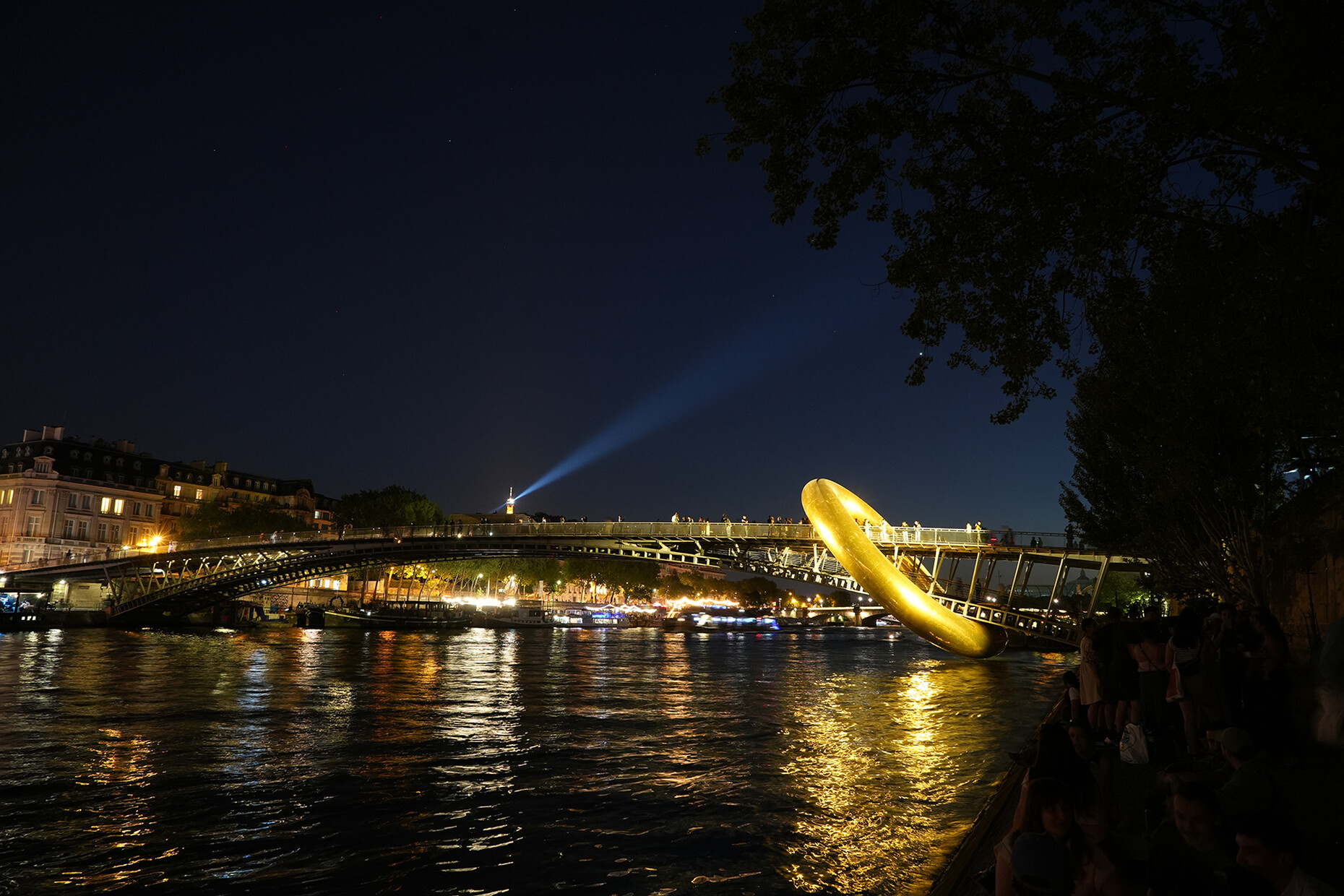Inflatable architecture
Florian Heilmeyer: Marco, you studied architecture at the TU Berlin from 1993-1999 and came across the subject of inflatable structures in your final year in 1999. How did you come up with it?
Marco Canevacci: When I finished my studies of architecture, and after having been a ‘culture consumer’ for years, I decided to become an active part of the underground culture of the city. You see, I moved to Berlin in 1991 and was fascinated by the spirit of the entire city. Together with friends we rented an abandoned factory with 2000 square metres in Berlin Friedrichshain – for €350 a month. We called it “Deli an der Schillingbrücke”. The space was gorgeous, right on the bank of the river Spree and right across the street from Ostbahnhof, but with one major problem: it had no windows, let alone a heating system. There was no way to heat it during the cold and long winter. So we started making DIY bubbles, inflating them with a hot air blower to offer smaller heated lounges. The whole project started as a hybrid concept to display the wide spectrum of cultural activities we encountered in Berlin during the 90s – and it all ended up as an underground techno club. This was the beginning of Plastique Fantastique.
What do you find so fascinating about bubbles that you have dedicated yourself entirely to this one topic ever since?
Marco Canevacci: Bubbles are unpredictable. They are in many ways the simplest of structures, a thin skin that separates but also connects. Pneumatic architecture is a medium to experience the same physical setting in a temporary and extraordinary situation, to dissolve social inhibition and enhance sensual interaction. It’s air which makes inflatables, not plastic. The configurations are endless.
How does it work in practice: What do your bubbles consist of? And how did you build the first ones yourself back then in the Deli? Did you have help from others who were perhaps more experienced and could help you? Did it work right away or did you have a series of failures? Were there any blueprints from the library or historical references?
Marco Canevacci: The construction of the first DIY bubbles was empirical. In our club, together with Michael Heim, Pietro Balp, and Raffaele Distefano, we sealed polyethylene film with a household vacuum packing sealer for vegetables, with stunning results. It was quite bizarre that we were not aware of the importance of documenting the large number of different installations we made during our experiences, so there are almost no photos of them.
Which theoretical models and predecessors did you look at? And which references are still important for your work today?
Marco Canevacci: There is a bizarre parallel between the great utopias of the 1960s and the peculiar situation in Berlin in the early 1990s. The former developed in a context marked by the presence of radical movements, spontaneous masses, and striking demonstrations. Streets, squares, and public space were occupied to protest against social injustice and to propose an alternative society with different values. The graphics of Archigram blasted the cities outwards. Haus-Rucker-Co’s emblematic bubble from 1967 — “Ballon für Zwei” — invited an outflow of private space onto the streets of Vienna. Die Architektur brannte.
The early 1990s in Berlin were marked by emptiness in many areas of the east side of the city (especially Mitte), and a political vacuum. These were years of joyful anarchy characterised precisely by the absence of organisation, religion, telephone networks, and constituted power. I always enjoyed swinging between these references.
In the meantime you are a duo at Plastique Fantastique: Yena, when did you join? And what fascinates you about these inflatable structures?
Yena Young: I came across inflatable architecture in 2012, when I was in Helsinki searching for a poetic light structure to bring the imaginary atmosphere of summer into harsh winter in Finland. The project was situated in the main square of the city center, surrounding the Havis Amanda sculpture. It had to be ephemeral yet sensible and I found that none of the conventional temporary architectural designs could fulfill my vision. During my research on the subject, a colleague suggested exploring "pneumatic architecture." As I delved deeper into this concept, I found inspiration in the works of Ant Farm and Buckminster Fuller. The ideas on DIY structures and the form of a perfect sphere resonated with me. I was fascinated by the controlled environment inside the bubble which is influenced by the uncontrollable environment outside, such as wind, rain, birds, trees and other natural elements. As I collaborated with Marco, our perception gradually shifted towards perceiving the potential of art rather than solely focusing on architecture. Together, we embarked on a shared journey in this new artistic direction.
Your bubbles are always temporary and are mainly used for events, festivals and biennials. Do you feel it is a loss when the bubbles are taken down again? Would you like them to be more permanent, at least for some of them?
Marco Canevacci: No. We like the ephemeral character of our artworks. There’s something magical about large-scale architecture popping up in 20 minutes and disappearing even faster. These inflatable constructions are light yet effective. Their skin of approximately 0.2 millimetres demarcates and defines a private and a public space – it connects by separating.
Yena Young: The audience understands the paradoxical nature of this imaginary border between inside and outside and begins to break the individual bubble to connect with others. Once the installation is over, the artwork dissolves; the memories achieved through the unique experience, however, endure.
Marco Canevacci: I think the most fascinating issue is the diversity of our works. Their range includes performances, sculptures, multisensorial installations, as well as architectural interventions.
Who is currently making the most exciting inflatable structures – apart from plastique fantastique? Are there any artists or architects with whom you have a regular exchange about your work and your experiences?
Yena Young: We like the work of Anish Kapoor, Tomás Saraceno, Smiljan Radić, we had cooperations with Raumlabor Berlin, we are friends with Penique Productions and many others. Today, apart from the controversial relationship with plastic, the ephemeral approach of temporary installations still reflects our Zeitgeist.
You have just published a book about your work. Looking through the many projects, you seem to have developed a lot of experience and professionalism in the "bubble business". Have your projects become routine? To what extent are you still experimental?
Marco Canevacci: We always try to diversify our work. During the pandemic, for instance, we have been working on a new performance installation — #StayOut — which has been staged on three different occasions in Germany and the Netherlands.
What's next, what are you working on and what are you most looking forward to?
Marco Canevacci: We received an invitation to participate in the upcoming Seoul Biennale of Architecture and Urbanism with a new artwork which has been developed for the Songhyeon-dong area. The project — Traces & Trees — invites the public to explore a forgotten landscape within the existing world and to question the paradoxical nature of perception and the complex layers of our surroundings. The opening is on September 1st.

Plastique Fantastique. A Journey through an Ephmeral Realm
Publisher: Marco Canevacci and Yena Young
Hardback edition
Language: English
180 pages and 138 illustrations
DCV Books, 2023
ISBN: 978-3-96912-129-0
32 Euros
